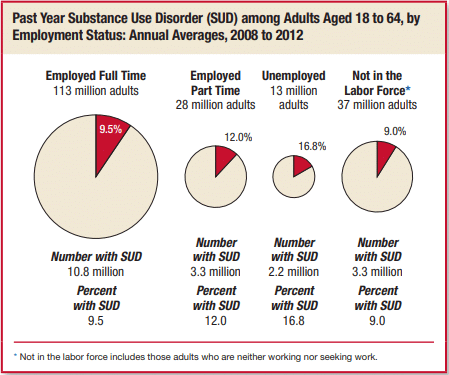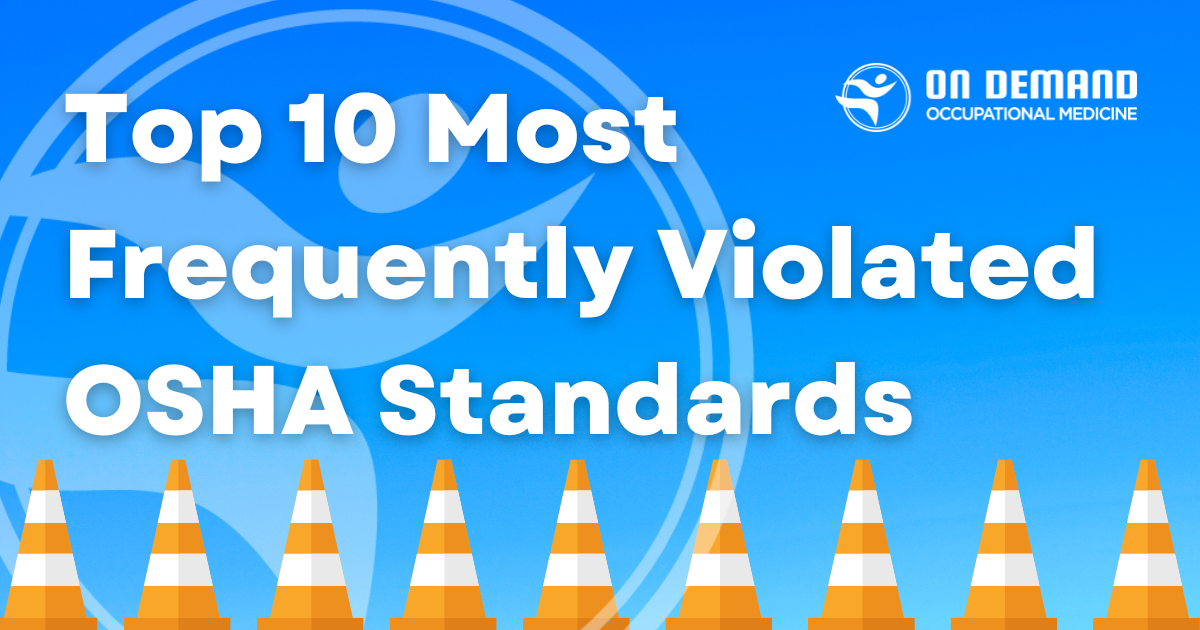While three fifths of Americans aged 18 to 64 are employed full time, millions of people struggling with a substance use disorder (SUD) make up the employed population. Do you have someone with an SUD working at your company? We’re here to help you assess your workforce, implement safety features and educate you on relevant data on addiction in the workplace.
Surprisingly, about 55% of those with an SUD are employed full time, breaking the stigma that those with addiction do not or can not hold down a job position. Twelve percent of part time employees are also struggling with an SUD, which is why it is even more important for employers to understand how to handle those with an SUD and implement programs such as Employee Assistance Programs (EAP) or bring on Substance Abuse Professionals (SAP).

What programs can help an employee struggling with addiction?
Support is crucial for employees with an addiction in the workplace. While employees’ personal life can be unknown, employers must still take the steps to provide support or treatment options to their workers as they spend at least 20 hours at work a week. EAPs are work-based intervention programs designed to assist employees in resolving personal problems that may be adversely affecting the employee’s performance. Employers can choose to require an employee to opt-in to an EAP or can leave it as an option moving forward. Implementing an EAP can be as simple as providing 24/7 nurse advice lines or assisting financially in legal assistance.Employees enrolled in an EAP can be assessed, treated and followed-up with for any type of aftercare that may be needed, allowing employees to continue working and allowing employers to decrease employee turnover.
What are the signs of workplace drug abuse and addiction?
The answer to this question can vary largely, and isn’t the same for everyone. However, there are a few common signs among those struggling with an addiction in the workplace.
-
Employee talks openly about money problems at home
This is an example that can be a bit tricky as it is easy to offend someone by assuming their money problems are a result of an addiction. If paired with other warning signs, it may be beneficial to sit down with an employee and bring in a human resource professional or even an SAP.
-
Employee hygiene has become a problem at work.
If an employee’s hygiene begins to decrease, such as noticeably not bathing or not maintaining facial hair or appearance, it can be a sign of someone struggling with an SUD. It is likely that someone is focusing more on their addiction than on their appearance, so it can be beneficial to once again bring in an SAP to address the issue.
-
Employee behavior becomes erratic or there is a lack of productivity.
If an employee seems to be slacking off or acting unusual, it’s time to bring in a professional to assess the behavior and provide the appropriate mental health care to the employee. Behavior changes are one of the easiest and most common signs of drug abuse in the workplace and must be addressed right away to avoid potential workplace accidents. Reasonable suspicion drug testing comes in handy here as an employer has the right to require the employee to get tested for substances.

What can happen if an employee with an SUD goes undetected?
Unfortunately, workplace accidents are common in those with an SUD, resulting in injury to themselves or others, and in severe cases, death. The U.S. Department of Labor claims that 65% of on-the-job accidents are related to drug and alcohol abuse in the workplace. When workplace accidents occur, companies are likely to face thousands, if not millions, of dollars in workers compensation and healthcare costs. In fact, drug abuse in the workplace costs American companies about $81 billion a year. Some of these costs are attributed to healthcare costs while other debts are attributed to a decrease in productivity and absenteeism among employees with an SUD. No matter the company size, it is highly likely that at least one person with an SUD is employed there, and healthcare costs are likely to skyrocket despite employees being ‘high functioning.”
Most employed people with an SUD are binge drinkers, which can result in higher healthcare costs due to decreased bodily functions or adverse health issues from alcohol. According to the Addiction Center, “drinking on the job can also lead to aggravated assault and sexual battery charges,” resulting in higher healthcare costs for any employees affected second handedly. Not only is your company going to face financial issues, but company employees become at-risk and experience a lower level of safety at work.
The bottom-line
 Employers must take the time to educate themselves on recognizing the signs of addiction in the workplace and have the necessary protocols put into place ahead of time. Recognizing an employee with an SUD can save a life, save company time and money and provide a healthier and happier work environment for all.
Employers must take the time to educate themselves on recognizing the signs of addiction in the workplace and have the necessary protocols put into place ahead of time. Recognizing an employee with an SUD can save a life, save company time and money and provide a healthier and happier work environment for all.




